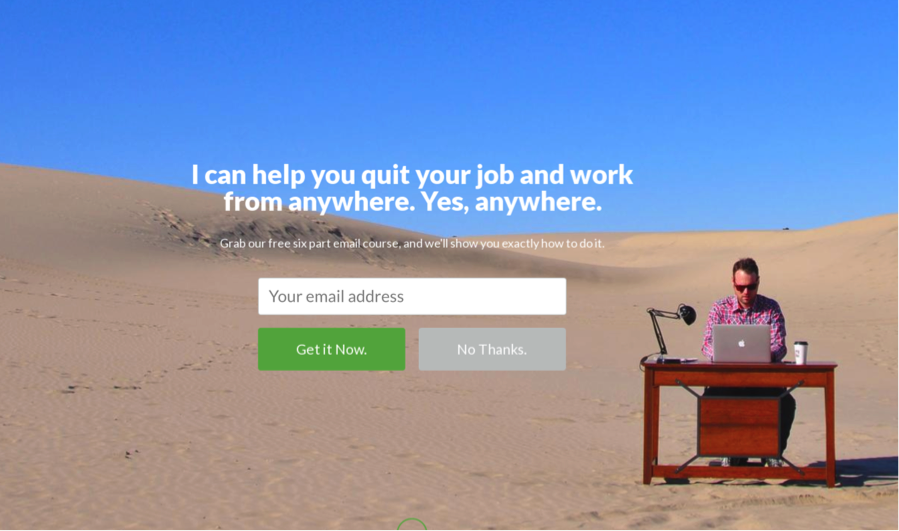Source: Nir and Far Nir’s Note: This guest post is by Vanessa Van Edwards, lead investigator at the Science of People — a human behavior research la
Nir’s Note: This guest post is by Vanessa Van Edwards, lead investigator at the Science of People — a human behavior research lab. This exclusive book excerpt is from Vanessa’s new book, Captivate: The Science of Succeeding with People, which was recently named as one of Apple’s Most Anticipated Books of 2017.
We all want more conversions. More sign-ups, more sales, more clicks. And so we obsess over calls to action, user flow, and user-centric design. But there is one tool most entrepreneurs, web designers, branding experts, and copywriters forget to take into account—personality.
Understanding the science of personality can help attract, retain, and convert your ideal user. Before diving into how understanding personality can improve your company, it’s worth noting that there is a lot of bunk out there about personality. Myers-Briggs, DiSC, enneagram, all of those models have shown little or no peer-reviewed evidence1.
However, when it comes to established science about personality, look to what psychologists call, “The Big 5.” The Big 5 personality traits have been rigorously studied and tested for thousands of published studies. In short, this theory posits that everyone ranks high or low in 5 specific personality traits:
- Openness: How adventurous, creative or open to new ideas someone is.
- Conscientiousness: How organized, detail-oriented or orderly someone is.
- Extroversion: How much someone likes being around people, how outgoing and talkative someone is.
- Agreeableness: How easy going someone is, how cooperative they are and how easy it is for them to be on a team.
- Neuroticism: How much of a worrier someone is, how reactive and emotionally stable they are2
How can understanding The Big 5 help your company? By helping you connect with your ideal user.
For example, companies must cater to the needs of different customers at different phases of the business’ growth. In the early days of a new technology, for instance, you’d want to serve early adopters since attracting laggards would be a waste of your scarce time and resources.
In other cases, a company would want to tailor its marketing to reach customers most likely to find value in its products or services. Understanding your customers’ personality increases the odds of your message resonating and increases the odds of a sale.
You can use what I call personality signals to attract (or repel) an ideal user based on their personality traits. These can be images, words, colors, videos, logos and pictures on your landing pages or in your branding. Let’s identify the personality traits of your ideal user and see how you can incorporate them as personality signals into your pages:
1.Openness
Is your ideal user low or high in openness? Check off which one sounds more like your ideal user:
____Highs: Love to try new things. They want adventure and are very curious.
____Lows: Gravitate towards routine, habit, and tradition. They are cautious before trying anything new.
Case Study: Location Rebel with Sean Ogle
Sean Ogle runs a company called Location Rebel—it is a membership website and blog that helps people work virtually and hack travel. Naturally, his ideal user ranks high in openness. They crave adventure. To cater to his customers’ personality, Sean embedded personality signals for his ideal user all over his landing pages.
- Personality Signal: Header Image The top image on his header says it all—be in exotic locations, work creatively, travel. He does it with the imagery AND with the words he uses. The adventure embedded in a phrase like “work from anywhere” is like a beacon for high opens.

- Personality Signal: Video On his homepage and YouTube landing page Sean also appeals to high openness with this video. People ranking high in openness like variety and they love surprise (watch until the end of the video for the big surprise…)
Openness Signals:
Depending on your ideal user, you would want to send personality signals to attract them. If you have low open users you want to make guarantees, refund options, and payment plans highly visible. This will help a low open user feel more comfortable with risk. If you want high open users you want to call them to a sense of adventure and curiosity3.
For example, in our business, we are looking for high open users. I run a human behavior lab. We teach people skills in online courses, corporate workshops and in my latest book called Captivate: The Science of Succeeding with People. My ideal reader is a high achiever, loves data, is intensely curious and hates touchy-feely stuff. So I have to cater my brand, my website and my curriculum to them. I specifically signal openness. When we changed our call to action button from “Register” to “Start Learning” we increased our opt-in rate by 14%!

2. Conscientiousness
Is your ideal user low or high in conscientiousness? Check off which one sounds more like your ideal user:
____Highs: Love lists, details, formulas and organization.
____Lows: Love big ideas, strategy, and free flow.
Case Study: GitHub
Engineers, programmers, and developers tend to be high in conscientiousness—they need to be detail oriented and have programmatic thinking. One small error can mess up entire lines of code. Github is a software development platform and their landing page celebrates details and high conscientiousness just as much as it celebrates programmers.
- Personality Signal: Pain Point One of the pain points Github both visually and verbally highlights is “Manage your chaos.” This phrasing is like manna from heaven for a high conscientious person. And look at the visual of moving from free flow into order:

- Personality Signal: Verbal Github uses words that attract high conscientious people. Some of their headers include: “Boxes? Check.” And high conscientious…

COMMENTS